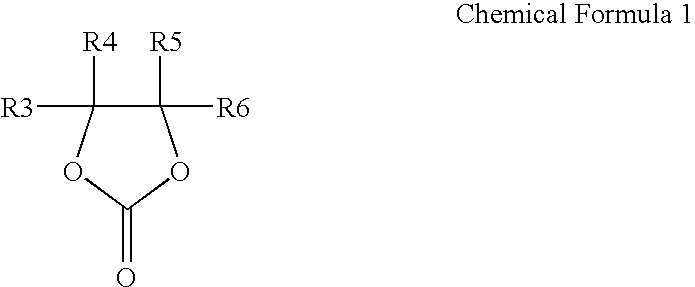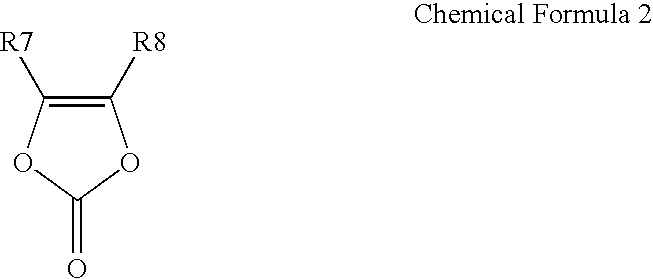Non-aqueous electrolyte lithium secondary battery
a lithium secondary battery, non-aqueous electrolyte technology, applied in the direction of non-aqueous electrolyte cells, cell components, electrochemical generators, etc., can solve the problems of lithium secondary batteries containing a large amount of ethylene carbonate, slow down of sei film, and more serious problems in lithium secondary batteries, etc., to achieve excellent high-rate charging/discharging characteristics, improve life cycle and low-temperature discharging characteristics
- Summary
- Abstract
- Description
- Claims
- Application Information
AI Technical Summary
Benefits of technology
Problems solved by technology
Method used
Image
Examples
embodiment 1
[0104]A lithium secondary battery was manufactured in the same way as in the Comparative Example 1, except that ethyl propionate was used instead of ethylmethyl carbonate.
embodiment 2
[0105]A lithium secondary battery was manufactured in the same way as in the Comparative Example 4, except that ethyl propionate was used instead of ethylmethyl carbonate.
embodiment 3
[0106]A lithium secondary battery was manufactured in the same way as in the Comparative Example 7, except that ethyl propionate was used instead of ethylmethyl carbonate.
PUM
 Login to View More
Login to View More Abstract
Description
Claims
Application Information
 Login to View More
Login to View More - R&D
- Intellectual Property
- Life Sciences
- Materials
- Tech Scout
- Unparalleled Data Quality
- Higher Quality Content
- 60% Fewer Hallucinations
Browse by: Latest US Patents, China's latest patents, Technical Efficacy Thesaurus, Application Domain, Technology Topic, Popular Technical Reports.
© 2025 PatSnap. All rights reserved.Legal|Privacy policy|Modern Slavery Act Transparency Statement|Sitemap|About US| Contact US: help@patsnap.com



